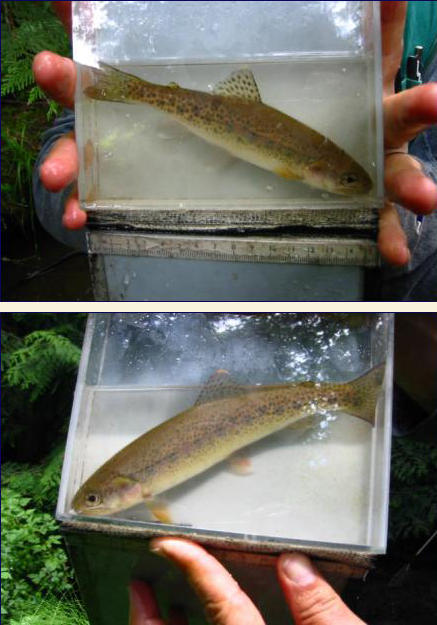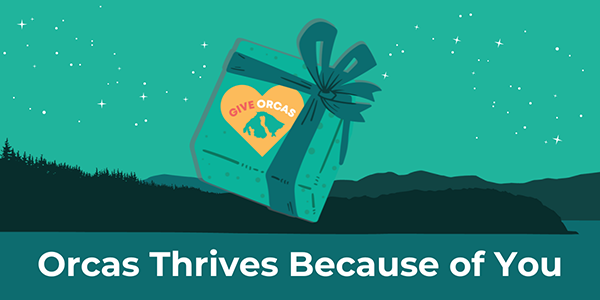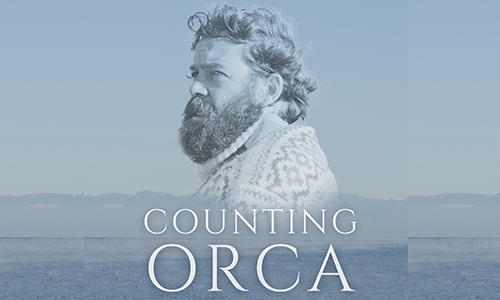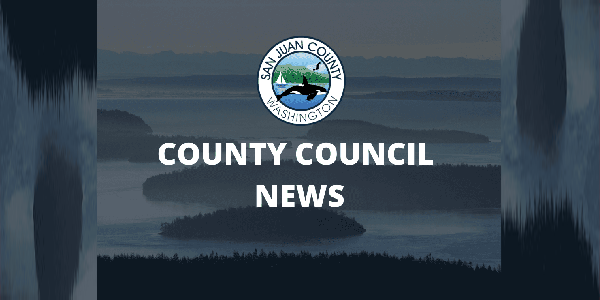||| FROM RUSSEL BARSH for KWIAHT |||
I was part of the team that surveyed this stream for fish and potential fish habitat, under contract to the Army Corps of Engineers, in 2004. At that time, we did bring two adult Coastal Cutthroat to hand at the plunge pool below the first downstream culvert. In our report to USACE, we noted that trout access to hundreds of feet of historical stream habitat along LaPorte Road was blocked by road culverts and the Grants’ dam; and proposed working with landowners to reconnect more of the stream and increase the chances for survival of the trout we had found there. Not long after our report, the dam was rebuilt, and summer instream flows decreased significantly. No trout were subsequently observed in the stream. We received no response from landowners or the county when we reported the loss of this trout run.
 As a result of the unexpected loss of the Bayhead Cutthroat stock, they were not available for inclusion in a 2016 genetic analysis of Coastal Cutthroat from Orcas and San Juan Islands by Maureen Small at the Washington Department of Fish and Wildlife, which identified two other genetically unique native trout stocks in San Juan County. It is therefore possible, but unlikely, that the Bayhead trout were descendants of fish planted by local anglers, who are known to have planted Coho in Orcas streams; or by the state, which planted Coastal Cutthroat in Moran State Park despite the existence of a native stock there.
As a result of the unexpected loss of the Bayhead Cutthroat stock, they were not available for inclusion in a 2016 genetic analysis of Coastal Cutthroat from Orcas and San Juan Islands by Maureen Small at the Washington Department of Fish and Wildlife, which identified two other genetically unique native trout stocks in San Juan County. It is therefore possible, but unlikely, that the Bayhead trout were descendants of fish planted by local anglers, who are known to have planted Coho in Orcas streams; or by the state, which planted Coastal Cutthroat in Moran State Park despite the existence of a native stock there.
From a biological conservation perspective, the county should focus on its two native trout populations, which are unique and irreplaceable. The county lost its opportunity to save a third, likely native stock in the Bayhead stream when it failed to protect instream flow a decade ago. Removing barriers to passage now will not bring back the Bayhead Cutthroat population. That is not to say that reconnecting Bayhead with fish-friendly culverts would be without value; a restored stream could be stocked with native trout from another island stream, or left for natural colonization by other salmon and trout. But our surviving native island salmonids should be prioritized.
I am surprised that the county did not consult my lab about its plans for Bayhead, and I am disappointed by the county’s apparent failure to work with the islanders most impacted by this project. In my opinion, effective conservation is almost always built from the ground up.
**If you are reading theOrcasonian for free, thank your fellow islanders. If you would like to support theOrcasonian CLICK HERE to set your modestly-priced, voluntary subscription. Otherwise, no worries; we’re happy to share with you.**









Further study is needed before this project goes forward ?
This project is a boondoggle and should be canceled immediately. There haven’t been any native fish in that stream for 20 years and millions of dollars and an entire summer of lengthy road detours seems like an awfully high price for a hundred feet of fish habit in a stream that dries out every year. Is there ANYBODY that is actually FOR this project going forward?
No Ken, there is not a single educated local FOR this project. FEMA money. Gotta spend it. It’s funny, in my years of experience…….”if it ain’t mine, I don’t care” and……”if you don’t spend it, you won’t get more”. Seems to me, they have to spend millions for nothing, just to get more. Lame. Fire department is the same way. VOTE NO.
Dumb on top of dumb.
County Council voted to terminate the culvert replacement contract this morning. Now, a postmortem needed on how this project got a far along as it did.
County Council voted to terminate the contract for this project.
RR Davis, the vote will be YES for the Orcas Fire and Rescue levy. The elderly population on Orcas needs it. OIFR enables them to live here.
Ken Wood says that there haven’t been any native fish in the stream for 20 years, but the article mentions that the dam existed in 2004.
Sometimes correlation IS causation.
And how about the big GRANT sign at the subject property, which violates the county sign ordinance.
Rules are for other people.